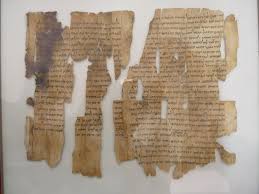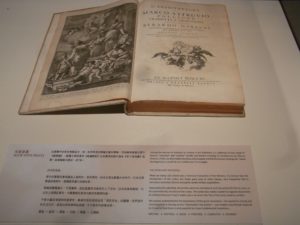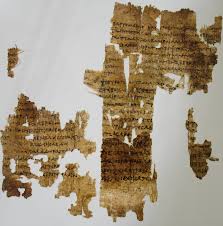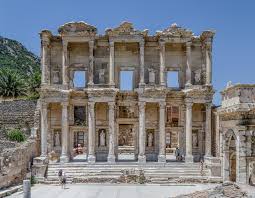Ancient Roman Scrolls: Ancient civilizations made the discovery that ideas could be represented by standard symbols that could be written down, painted on a surface, or pressed into wet clay somewhere between 5,000 and 6,000 years ago.

The Sumerians used a stick whose cross section had either three or four side to write their cuneiform letters on moist clay tablets that were later baked.
What were scrolls used for
Roman books were on rolls of paper called scrolls. Each end of the paper was attached to a rod. The reader had to unroll each page to read the book. People used small reeds to write on the scrolls. The ink was made from a kind of tar called a pitch or from an octopus.

A scroll such as the famous tabula Petingeriana roadmap measured about a foot (35cm) in height and 23ft (7m) in length.
Scroll Writing
Later, the Egyptians and Greeks used a mallet and chisel to write on stone and a red pen to write on papyrus and specially scraped and prepared cow and sheepskins. Hieroglyphs were pictorial symbols of objects and animals from the Egyptian’s everyday life.

They were often richly detailed and painted by the writer. It was important to the Egyptians that their written language was beautiful and the symbols were grouped in an arrangement pleasing to the eye.
Their order was quite flexible and they could be read from right to left, left to right, and from top to bottom. The Greeks inherited their alphabet from one brought to their islands by Phoenician traders.
Ancient Roman Scrolls
By this time, many of the letters they used were ones we would recognize today and some even had the same sounds associated with them.

A library worth particular note is that built by Emperor Trajan, just by his famous Trajan’s column. Trajan’s library was actually divided into two: one either side of the column. One half of the library held texts written in Greek whilst the other held texts in Latin. The column itself is interesting because it is devised as a long scroll relating actual historical events.
Ancient Roman Libraries
Ancient Roman libraries tended to be built into a semicircular room accessed by way of a portico. The library room was lit by natural light entering through the roof.

The Roman Scrolls were kept in wooden boxes up the walls which could be accessed by way of wooden ladders and balconies. One or more tables towards the center of the room were used for reading of the texts. Being scrolls they had to be enrolled in order to be read.
Books (scrolls) you might find in an Ancient Roman library:
- A variety of books on Roman medicine and herbal remedies, for example, Galen
- Tacitus’ histories – mandated into libraries by his descendant Emperor Tacitus
- Sulla’s autobiography
- Homer’s epics Iliad and Odyssey which inspired Virgil’s Aeneid
- Vitruvius’ De Architectura
- Cicero
The old scrolls or rolled books were still popular even after the invention of the bound book. The word for scroll was VOLUMEN in Latin (the second ‘V’ makes a long ‘U’ sound) and the word for a bound book was CODEX. It is from these words that we get our own words for encyclopedia volume and law codes.



